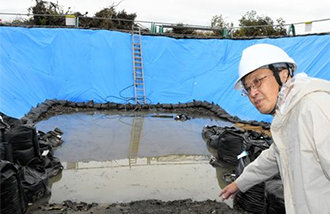Universities Reduce 2005 Entrance Quota
Universities Reduce 2005 Entrance Quota
Posted October. 13, 2004 23:15,
H University in North Jolla Province decided to admit 800 fewer students next year after meeting only half of its entrance quota for 2004. D University in Kangwon Province, where the total number of freshmen in 2004 was only about 30 percent of the entrance quota, will choose 200 fewer students than the previous year.
The Ministry of Education and Human Resources Development (MOE) said on October 13 that after compiling data from universities and junior colleges on their entrance quotas, the total entrance quota will be reduced by 15,701 students as universities will be reducing the total number of freshmen for 2005 by 6,104, and junior colleges will be accepting 9,597 fewer students.
The entrance quota for four-year universities, including technological universities, will be reduced from 359,418 students last year to 353,314 this year, not including educational universities, while the entrance quota of junior colleges will be cut from 277,223 to 267,626.
Why the Reduction?
The main cause is active efforts by the MOE to reduce the quota by linking its university financial aid program and the structural reform of universities. Also, some private schools in rural areas voluntarily reduced their entrance quota as they were having trouble attracting new students.
According to the data from MOE for the Assemblys inspection of government offices, 55 out of 213 four-year universities, or 26 percent, were unable to fill 80 percent of their entrance quota in 2004. Only 58 schools, or 27 percent, were able to fill their entrance quota.
Junior colleges had a worse situation with 70 schools out of 158, or 44 percent, having an 80 percent or less freshmen registration rate.
The MOE explained, In connection to the New University for Regional Innovation (NURI) Project, the Specialization Program for Metropolitan Universities, and various financial aid programs, including one for junior colleges, 13,544 fewer students will be accepted, and the school voluntarily brought down the ceiling of its enrollment quota by 2,157.
Reduction Trend
The enrollment quota for four-year universities increased by 2,635 in 2001, 8,754 in 2002, and 3,479 in 2003, and dropped for the first time in 2004 by 2,815. General colleges, with the exception of technical colleges, will be reducing their quota for the first time in 2005.
Junior colleges cut their quota in 2001 by 2,140 and brought it back up to 1,139 in 2002, but the reduction trend is visible as it was reduced by 7,252 in 2003, 8,699 in 2004, and 9,597 in 2005.
Reduction Volume
Thirty-five four-year universities including Seoul National University, which will be reducing its quota by 625, and 85 junior colleges, including Daegu Polytechnic College, which will be cutting its quota by 548, will reduce their entrance quotas.
Schools in the Seoul Metropolitan area will be choosing 1,203 fewer students, with four-year universities cutting their quota by 933 and junior colleges cutting theirs by 270. Schools outside the Seoul Metropolitan area will be choosing 14,498 fewer students, with their four-year schools cutting their quotas by 5,171 and junior colleges by 9,327.
The MOE plans to reduce the quota by 95,000, or 15 percent, by 2009 for the structural reform of universities.
State universities will be required to reduce their quota by 12,000, or 15 percent, within the next five years, while a standard goal will be set in terms of number of students to the number of professors which will be coordinated with administrative and financial aid to encourage private universities to conduct voluntary quota cuts.
Seong-Chul Hong sungchul@donga.com







